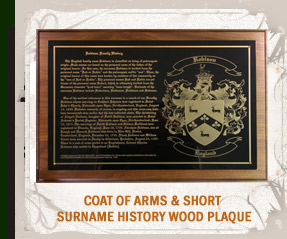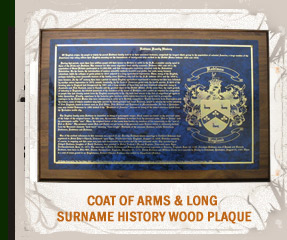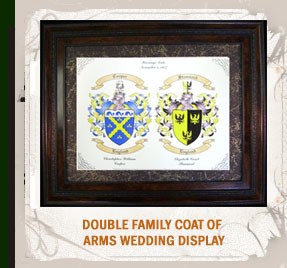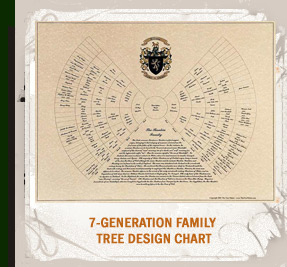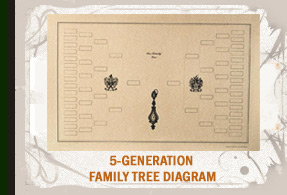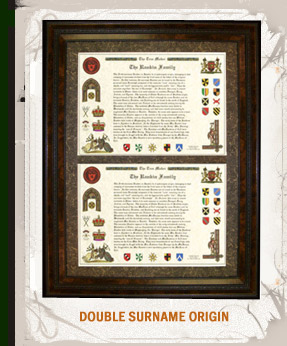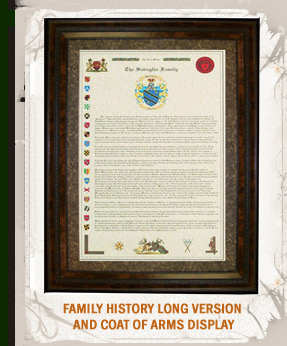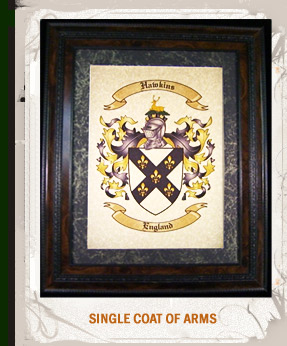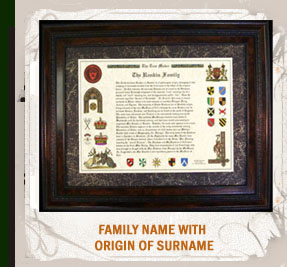Display your Canadian coat of arms or your Canada heritage
Canada
the New France: Canada was probably visited by the Norsemen
about the year 1000, and John Cabot, sailing for the English Crown,
landed somewhere on the coast in 1497. In 1534 the bold French navigator,
Jacques Cartier, entered the mouth of the St. Lawrence River; and
though Cartier returned several times, permanent settlement did
not begin until seventy-one years later, when Samuel de Champlain
established Port Royal on the present site of Annapolis Royal, Nova
Scotia. The French called Nova Acadia "Acadia". A few
years later Champlain led an expedition up the St. Lawrence, and
in 1608 he directed the founding of Quebec City.
Europeans first
crossed the Atlantic to Canadian waters after fish, but the French
soon decided that greater wealth lay in the furs of Canada. As long
as the French held control of what they called New France, the whole
economy of the territory was based on the fur trade. The French
king, who collected a tax on the imported pelts, granted monopolies
on fur trading. Montreal, founded in 1642 was made a fur-trading
post, but the chartered fur companies did not encourage settlement
as vigorously as they had been expected to.
Although they
were involved in a bloody struggle with the Iroquois for many years,
the French usually got along will with the various Indian tribes.
As the field of operations expanded with the passing years, the
voyageurs poled and paddled their small craft far up the rivers
of the interior in order to collect the precious pelts, and the
coureurs de bois plunged deep into the forests in search of new
fur country. The efforts of professional explorers were often put
to shame by the achievements of these woodsmen and of the French
missionaries who journeyed through thousands of miles of unknown
territory. Men like Father Marquette, Joliet, and La Salle led the
way westward to the Great Lakes and south along the Mississippi
Valley in the latter half of the seventeenth century.
Meanwhile the
settlements in Acadia and on the St. Lawrence grew very slowly.
There was much internal conflict: those who wished to encourage
colonization quarreled with those interested only in fur trading;
businessmen squabbled with churchmen; military and civilian authorities
disagreed; and the home government interfered in colonial affairs.
When Count de Frontenac became governor of the colony in 1672, New
France had a population of only a few thousand. By this time British
colonies to the south were well established, and England's
new Hudson's Bay Company was collecting furs to the north.
In
1689 the French began their long and futile struggle against the
English in the New World. The series of wars involved France
and England in Europe, as
well as the colonies of the two powers in America. War continued
intermittently for seventy years and ended with the conquest of
New France in 1763. Each side had it Indian allies, with the British
supporting the savage Iroquois. The French used Indian raiders so
successfully that Americans speak of the campaigns as the French
and Indian War. It was a periods of terrible strife, yet in these
years New France grew as it should have done earlier. Agricultural
communities developed along the St. Lawrence and the population
increased to about sixty thousand.
In 1755 the
British expelled the Acadians from Nova Scotia because these stubborn
settlers repeatedly refused to swear allegiance to the British Crown.
In 1759 Wolfe defeated Montcalm on the Plains of Abraham, and Quebec
City fell to the British. The following year New France gave up
the struggle. By the Treaty of Paris in 1763 the French surrendered
all of their possessions in America except Louisiana west of the
Mississippi.
Loyalty
and Rebellion in Canada: In 1774 Britain's Parliament
passed the Quebec Act, which gave the French Canadians the right
to retain certain of their social, religious, and judicial institutions.
Political representation was lacking, but the French Canadians had
never known democracy. By this legislation they were sufficiently
assured of Britain's good will to repel American attempts
to "free" them during the Revolutionary War and the
War of 1812. The Revolution brought a different sort of invasion,
as well. United Empire Loyalists from the American colonies entered
Canada and settled to the east and west of the French settlements
in Quebec. This development resulted in 1791, the establishment
of Upper Canada {Ontario} and Lower Canada {Quebec}.
In the early
years of the nineteenth century, the fur traders continued to push
westward. Two great competitors were the Hudson's Bay Company
and the North West Company. Englishmen and Scotsmen managed both
companies, but both depended largely upon French-Canadian traders
and trappers. The companies fought each other until the British
Government had to take steps to halt the bloodshed. They also boldly
exploited American territory to the south and struggled with the
Americans for control of the West Coast. Fur men journeyed to the
Pacific during the War of 1812, following the lead of such bold
pioneers as Alexander Mackenzie and Fraser.
While the fur
men opened up the far west and traveled northward beyond the Arctic
Circle, immigration from the British Isles gradually swelled the
population of eastern Canada. The newcomers moved through the Quebec
area and spread out over what was later to become the province of
Ontario. As more and more land was cleared, wheat began to be recognized
as a valuable export, along with furs, fish, and lumber. Shipbuilding
became an important industry also. Canada's principal markets
were in the mother country and the British West Indies. To improve
transportation eastward from the Great Lakes, the construction of
canals began in the 1820's.
As the population
of the colonies increased, there was growing discontent among the
working Canadian people of both Upper and Lower Canada. Those in
Lower Canada resented the power of the British authorities and expanding
influence of English and Scotch financiers and industrialists in
their territory; those in Upper Canada opposed the privileges, which
the Crown granted to the landed gentry, to banks and wealthy corporations,
and to the Anglican clergy. Each group wanted more control over
the government of its own area. Both were influenced by the development
of democratic government in the United States.
In 1837 rebellions
flared up. William Lyon Mackenzie led the revolt in Upper Canada,
and Luis Papineau was the ringleader among the French Canadians.
Little was accomplished by either insurrection, though large numbers
of Americans rushed to Mackenzie's assistance. Most of the
Canadians had no desire to be "freed" or to win political
reform through violence. The revolts, however, brought into the
open the discontent, which had been widespread for many years, and
the British Government took steps to correct the unhealthy situation
in its North American possessions. In 1840 the union of Upper and
Lower Canada formed the single province of Canada. But the legislature
under this new system still had no control over the Executive, or
Governor's Council, which held the purse strings. Eight years
passed before the cabinet system of responsible government was established
both in Nova Scotia and in the province of Canada.
The
Dominion: Progress and Expansion in Canada. In 1846 Great
Britain adopted a free trade policy, thereby damaging Canada's
commercial position and weakening the ties between colony and mother
country. Some Canadians then proposed union with the United States,
but the majority came to favor a more independent status, especially
after relations between Canada and the United States became severely
strained during the American slavery controversy and the War Between
the States. Independence required strength; to be strong Canada
had to be united. The Charlottetown Convention in 1864 and the Quebec
Conference that same year prepared the way for the British North
America Act, which in 1867 created the Dominion of Canada.
The original
members of the Dominion were Nova Scotia, New Brunswick, and the
province of Canada, which was divided once more - this time
into Quebec and Ontario. Price Edward Island, like the American
state of Rhode Island in Revolutionary days, had no desire to join
its larger neighbors. The tiny island did not enter the Dominion
of Canada until 1873.
Before Dominion
status was achieved, the population of Canada had passed the three-million
mark,, and immigrants in search of good farmland were pushing westward
from Ontario. In fact, a good many immigrants, as well as some native
Canadians, were already becoming convinced that greener fields lay
south of the border, and emigration form Canada to the United States
was getting under way. But the Dominion was taking steps to develop
its own vast western lands, which had remained empty while under
the control of the Hudson's Bay Company. The extension of
government authority to the west was checked only briefly by the
Red River Rebellion of 1869, in which Louis Riel, with some American
supporters, attempted to stave off the advance of civilization to
that region.
In 1870 Manitoba
became the fifth province, and a year later British Columbia became
the sixth. To persuade the West Coast Province to enter the Dominion,
the government had to promise to construct a railroad to the Pacific.
In 1874 the Northwest Mounted Police, organized the previous year,
set out to maintain law and order in the wilderness and on the plains,
but it was not until 1905 that Saskatchewan and Alberta became members
of the Dominion. Twenty years earlier the transcontinental Canadian
Pacific Railway was completed, after years of heroic effort and
tremendous expense. The railroad opened up the prairie wheat country,
established towns, and attracted streams of immigrants with its
offers of free land. After leading a second rebellion by Louis Riel,
he was executed in 1885, the year of the railroad's completion.
Immigration
was heaviest between 1900 and the beginning of World War I; its
peak of more than 400,000 in 1913 was about one thirteenth of the
total population at the turn of the century. After 1911 the drive
to the Wheatland's decreased, and the older, more industrialized
provinces of Ontario and Quebec began to attract more newcomers,
as well as many who had tried, and failed, to make their fortunes
on the prairies. These early years of the twentieth century were
a period of great political and economic development in the Dominion,
with Canada rapidly winning a place for itself among the nations
of the world. As Prime Minister from 1896 to 1911, Sir Wilfrid Laurier,
the French-Canadian leader of the Liberal party, carried on the
work begun by such earlier executives as Sir John MacDonald and
Alexander Mackenzie.
Canada
and the World Wars: Despite opposition from the French
Canadians to participation in "England's War",
Canada contributed greatly to the Allied cause in World War I, both
in manpower and in material. About four fifths of the 600,000 men
who entered the armed services enlisted voluntarily; more then 35,500
men were killed in action. Wheat production soared, and new industries
developed rapidly. Although wheat and flour were the major exports
at war's end, factories and mills were attracting more and
more workers, and manufactured goods were gaining in importance.
This trend continued
in the years that followed. During the 1930's, when drought
and depression stalked the land, the population of the Prairie Provinces
declined by an amount of a quarter of a million. World War II brought
prosperity to both agriculture and industry, but the greatest development
was in industry. Again the French Canadians opposed participation
in the war, but over a million Canadians entered the services, and
over forty thousand gave their lives, including many young French
Canadians. Besides creating a first-rate army, navy, and air force
with amazing speed, Canada served as one of the outstanding "arsenals
of democracy" and played an important part in the development
of the atomic bomb.
Political changes
occurred both in peace and in war. In 1921 Prime Minister Mackenzie
King began the longest career of political leadership in Canadian
history. As head of the Liberal party, he served as Prime Minister
from 1921 to 1930, except for a three months' interval, and
was returned to office in 1935; in 1948 he announced his retirement.
In 1931 the dominion took its place in the British Commonwealth
of Nations as officially established by the Statute of Westminster.
Canada was one of the original members of the United Nations. Pressure
from the Liberal West led to the enactment of the Family Allowance
Act in 1944, under which the Canadian Government offers financial
assistance to families in proportion to the number of dependent
children. Social legislation of this nature is receiving increased
attention in the nation. In the years after World War II, Canada
gave generously to Great Britain and other nations whose economies
had been shattered by the conflict and became recognized as one
of the few islands of prosperity, democracy, and opportunity in
a troubled world.
Of course much
has changed since then and the nation of Canada is a thriving country
proud of its heritage. Canada is a place that you would be proud
to display your Canadian genealogy, family coat of arms or surname
history.

